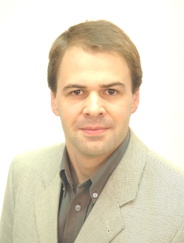The 20th IASTED International Conference on
Applied Simulation and Modelling
ASM 2012
June 25 – 27, 2012
Napoli, Italy
INVITED SPEAKER
Advances towards a comprehensive simulation: combining live, virtual and constructive.
Abstract
Simulation is a concept that has been well established and integrated into many domains. It is a valuable tool for gaining insights into complex environments, for conducting “what if”-analyses, for product design, and, last but not least, for education and training. Simulation is generally considered to be very powerful, effective and efficient by decreasing the need of real systems. Emerging simulation methods and technologies like Virtual and Augmented Reality promise to bridge the gap between control of laboratory and real-life settings.With reference to the proportion of simulated vs. real stimuli, simulation can be divided into constructive, virtual and life simulation. In constructive simulation, both, system and human operator are simulated. Digital Human Models in a CAD-environment are typical examples for this. Virtual simulation is characterized by real operators and simulated systems. This is true for flight or driving simulators. Finally, live simulation includes real systems and real operators, e.g. military exercises in the field.
But this subdivision is currently questioned. Virtual simulation frequently includes digital human models or human behavior models to facilitate a realistic environment. A clear division between virtual and live simulation is also fading. New concepts of embedded training or embedded virtual simulation allow the inclusion of virtual elements into real operating equipment. It is also understood that successful training has to include different types of simulation. A comprehensive simulation including live, virtual and constructive, might also bridge the gap between system design and training. E.g., details of critical tasks are often identified for education and training. By including such tasks into constructive simulation the overall system performance can be increased. On the other hand, education and training can be based on simulation modules which were developed during construction. At present, this is rarely the case and many things are redone all over again. Actual research groups work on identifying requirements and needs for such a more comprehensive simulation.
This presentation describes the different types of simulation and the actual, ongoing technological development in some of these fields. Such trends include serious gaming, low-cost simulators, Virtual and Augmented Reality, or intelligent tutoring systems. Examples for successful implementations including more than just one type of simulation will be given. Because of the crucial importance of the human operators, a special part will refer to the different types of human behavior modeling and how they might fit together. The presentation will also summarize activities in research groups of the NATO Research and Technology Organization (RTO) about simulation and training. A first idea and personal perspective on the future development in this field towards a comprehensive simulation will conclude the presentation. This will not happen in short term but with the ongoing technological development, it might become applicable for some application even in a mid-term.
Biography of the Invited Speaker

Dr. Thomas Alexander is head of the Research Group Human Factors of the Ergonomic and Human Machine Systems department of Fraunhofer FKIE. He has received his Ph.D. degree in Engineering at the University of Wuppertal, Germany, and has been working in the field of human factors and ergonomics since 1994. During his time at FKIE, Dr. Alexander has conducted and led many research and technology projects in the related areas.
Dr. Alexander has published more than 100 papers and chairs several national and international technical committees and boards in the domain of modeling and simulation of human factors. At present, Dr. Alexander is chairman of the Technical Committee on Human Simulation and Virtual Environments of the International Ergonomic Association (IEA). He also represents German interests within different research groups of the NATO Research and Technology Organization (RTO) and the European Defense Agency. Together with NATO-SCI 176 Dr. Alexander has received the NATO RTO Scientific Achievement Award in 2010. His main research interests and activities are human behavior modeling, virtual and augmented environments with a special focus on human factors and training.




















